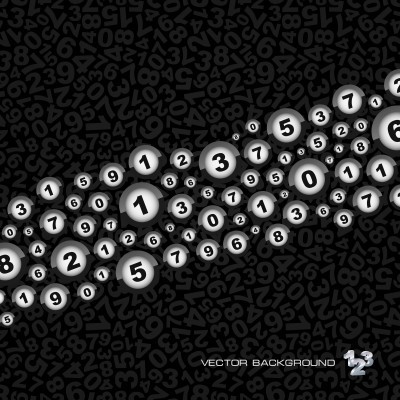College Big Investment Paltry Return
Post on: 16 Март, 2015 No Comment

The value of a college degree is a middle-class article of faith. But exclusive new research suggests it may be far less than previously thought
If there’s one truism that goes virtually unchallenged these days, it’s that a college degree has great value. Beyond the great books, beyond the critical reasoning skills, and beyond the experience itself, there’s another way that a college degree has value: Over the course of a working life, college graduates earn more than high school graduates. Over the past decade, research estimates have pegged that figure at $900,00, $1.2 million, and $1.6 million. But new research suggests that the monetary value of a college degree may be vastly overblown. According to a study conducted by PayScale for Bloomberg Businessweek, the value of a college degree may be a lot closer to $400,000 over 30 years and varies wildly from school to school. According to the PayScale study, the number of schools that actually make good on the estimates of the earlier research is vanishingly small. There are only 17 schools in the study whose graduates can expect to recoup the cost of their education and out-earn a high school graduate by $1.2 million, including four where they can do so to the tune of $1.6 million. At more than 500 other schools, the return on investment, or ROI, is less—sometimes far less. College, says Al Lee, director of quantitative analysis at PayScale, is not the million-dollar slam dunk people talk about. The top of the list was dominated by elite private universities, with the Massachusetts Institute of Technology taking the top spot. Its net 30-year ROI of nearly $1.7 million makes it the most valuable undergraduate degree in the nation. The large number of MIT students who enter such high-paying fields as engineering and computer science certainly helped, but the school’s advantages go well beyond that, says Melanie Parker, executive director for global education and career development at MIT. All the students at MIT, regardless of their major, take a strong core curriculum, which exposes them to more in-depth science and math than students at most other programs, Parker says. Employers look for any major from MIT, because our students are prepared for almost anything. A Taste of the Ranking
The next best education bargain was California Institute of Technology in Pasadena, Calif. where students out-earned high school grads by about $1.6 million, followed by Harvard University in Cambridge, Mass.; Harvey Mudd College in Claremont, Calif.; and Dartmouth College in Hanover, N.H. For the complete ranking, and an in-depth explanation of the methodology, check out our interactive table The new research is based on self-reported compensation data collected through PayScale’s online pay comparison tools. PayScale examined pay reports from 1.4 million graduates of U.S. colleges and universities with no advanced degrees to calculate the ROI of each school. One reason the PayScale study resulted in a far lower estimate of the ROI on a college education is the way it calculated college costs. Instead of assuming everyone graduates in four years, as some do, PayScale used the actual number of years it takes students to graduate from each institution—4, 5, or 6 years. Another reason for PayScale’s far lower ROI estimate is that it accounts for the fact that many students never graduate—and go on to earn little more than a high school graduate. For them, the ROI on their college education is effectively zero. Of the two, graduation rates had a far bigger impact on ROI. Of the 554 schools in the study, the net ROI—for graduates only—was $627,239. But once adjusted for the average six-year graduation rate of 58 percent, the average overall net ROI shrank by 37 percent, to $393,574. Schools with the worst graduation rates—at some schools, fewer than 20 percent of students graduated in six years— fared even worse in the PayScale analysis. Some universities are getting paid to have people show up, take a class, and flunk out, says Lee. If you bought cars, and half the cars didn’t work within the first six months, and you couldn’t get your money back, people would be pretty outraged. Complaints About Data Analysis
Schools that performed poorly in the PayScale analysis took issue with the methodology. Among the complaints: PayScale based the study on a small, self-selecting sample of alumni from each school—on average, about 1,000—and failed to consider financial aid, which would have reduced total college costs and improved ROI for all schools. One school that argued in favor of incorporating financial aid in the calculations was Philadelphia University, which had a 30-year net return on investment of $218,000. Using the school’s average financial aid award and more recent graduation rate, the 30-year net ROI would be $276,000. Other schools said the methodology also failed to account for the intangible benefits of a college education, including the benefits to society. If monetary Return on Investment (ROI) were the main purpose of education, most of us would make different career decisions, wrote Pat Pike, interim provost and vice-provost for education at Biola University in LaMirada, Calif. in an e-mail. Biola’s education is not primarily about money. If you calculated the ROI [to] society of a Biola education, compared with the average, it would be huge. While private schools dominated the top of the list, public schools proved to be far better value overall, at least for in-state students. Because of the lower costs paid by in-state students—$82,301 compared with $126,933 for out-of-state students at public institutions and $170,219 for students at private schools—they enjoyed the best net annualized ROI: 9.7 percent. The worst deal: paying out-of-state tuition at a public university. Doing so results in an average annualized net ROI of 8.4 percent. Private schools yielded a net annualized return of 9.1 percent. Credential Inflation

Individual schools fared well, or poorly, for many reasons. At Skidmore, the elite private liberal arts college in Saratoga Springs, N.Y. that was an all-women’s school until 1971, lower salaries for women, who make up a disproportionate share of its alumni base, contributed to lower overall earnings for graduates. The result was a 30-year net ROI of $325,700, placing it at the 58th percentile for all private schools in the study. If Skidmore’s net ROI were based on alumni earnings since 1990 rather than 1980, it would be $150,000 higher, said Dan Forbush, a Skidmore spokesperson, in an e-mail. Other schools paid a price for a focus on the liberal arts, teaching, or other academic specialties that produce many graduates who pursue careers in low-paying occupations. Such schools as Harvey Mudd, most of whose graduates go into careers in engineering and science, have something of an unfair advantage over schools such as Lesley University. where more than 70 percent of students major in the liberal arts, visual and performing arts, public administration, and social services. One big conclusion that can be drawn from the PayScale data is that college—and college alone—may not be the great investment it was once thought to be. Richard Vedder, director of the Center for College Affordability & Productivity in Washington, D.C. notes that with the college-educated accounting for a larger percentage of Americans, the bachelor’s degree has been devalued, and its ROI has taken a hit. We have credential inflation in America. A college degree has become mundane and ordinary, Vedder said. We used to send kids to college to become lawyers and doctors. Now we send them to college to work at Walmart. A. Jordan, who graduated with a degree in political science from the University of North Carolina in Wilmington in 2008, knows about the devaluing of the college degree all too well. As a stewardess in the private yachting industry with nothing but a high school diploma, she says she earned triple what she’s making now in her administrative support job in Winston-Salem. She’s making so little money with a college degree, she’s considering returning to school for her master’s. Philosophy, political science, and other degrees of that nature are not giving you concrete skills, Jordan wrote in an e-mail. She declined to use her full name, citing possible career repercussions. The Professional Advantage
Advanced and professional degrees, however, may be a bigger differentiator in the labor market, with bigger payoffs. According to a June 15 study by the Georgetown University Center on Education & the Workforce, the gross lifetime earnings for someone with a professional degree is nearly $4.7 million, about $3.5 million more than a high school dropout earns. The increased earning power conferred by postsecondary education and training is both tangible and lucrative over a worker’s lifetime, says Nicole Smith, senior economist with the center. Another conclusion suggested by the PayScale data is that brands matter, and cutting corners on a college education doesn’t pay. The top of the list is dominated by such well-known schools as Princeton, Yale, Duke, and Amherst, and five of the top 10 are Ivy League institutions, where 30-year net returns on investment averaged nearly $1.4 million. One possible reason that such schools fare well in an ROI analysis is that they educate the wealthiest part of the population, says Jack Maguire, an educational consultant and former dean of admissions at Boston College. Wealthier families produce children with higher SAT scores who are more successful in gaining admission to highly selective schools. After graduation, family wealth confers a great career edge, as well, with many graduates taking advantage of family connections to land top jobs. Says Maguire: It’s kind of a self-fulfilling prophesy. Students who made an investment in higher education at the schools at the top of the list say they got their money’s worth. Ryan Pope, who studied economics at Harvard, says the experience prepared him to compete in the job market and the Harvard name resonated with employers. I don’t believe my degree helped me directly, but it gave me a better set of tools to complete my job, said Pope, a 2008 graduate who is now marketing director at 2X Software in Dallas, in an email exchange. While I don’t think I received a premium just for my degree, I think my employers hopefully saw [it] as a sign that I was serious about my work and would strive to succeed against tough requirements and deadlines. Lagging the Stock Market For many, the very notion of a financial return on investment misses the point of higher education entirely. Scott Jaschik, editor of Inside Higher Ed, a website that covers news of colleges and universities, says the return on a liberal arts education goes well beyond dollars and cents, and students who major in liberal arts aren’t in it for the money. People who major in history tend to think, ‘I’d like to get a well-rounded education that will help me in many fields,’ says Jaschik, a history major himself. I don’t think philosophy and poetry majors are there because it’s going to make them rich. Maybe not, but most students expect, if not riches, then at least a comfortable life. And according to PayScale’s Lee, if they’re enrolled at many of the schools on the list, they will be bitterly disappointed. Over the past 30 years, the S&P 500 Index averaged about 11 percent a year. Only 88 schools out of the 554 in the study had a better return than the S&P. Everywhere else, students would have been better off—financially, at least—if they invested the money they spent on their college educations and never set foot in a classroom. For almost every school on the list, writes Lee in an e-mail, prospective students paying full price would probably have been better off investing in the stock market 30 years ago rather than spending their money on a college education.














